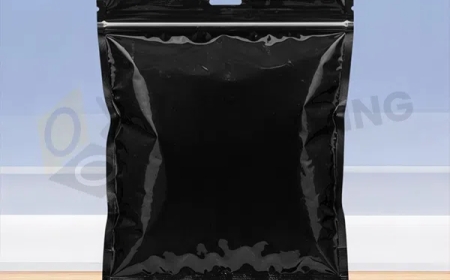Take My Class Online: Adapting to Different Learning Styles
Take, My, Class, Online

Online education has transformed the way we approach learning, offering unparalleled flexibility and accessibility. However, adapting to this mode of learning requires a keen understanding of different learning styles and how to accommodate them effectively in an onlinetake my class for me online. This article will explore various learning styles and provide strategies for adapting to each style in an online class setting.
Understanding Learning Styles
Learning styles refer to the preferred ways individuals process and understand information. While various models of learning styles exist, one widely recognized framework includes the following styles:
-
Visual Learners: Prefer to see and use images, diagrams, charts, and other visual aids to understand and retain information.
-
Auditory Learners: Learn best through listening and verbal communication. They benefit from lectures, discussions, and audio materials.
-
Kinesthetic Learners: Prefer hands-on experiences and physical activities. They learn best through doing, experimenting, and engaging in tactile activities.
-
Read/Write Learners: Favor reading and writing as their primary modes of learning. They excel with written texts, notes, and lists.
Adapting to Visual Learners
Visual learners process information best through images and visual representations. To support visual learners in an online class:
-
Use Visual Aids: Incorporate diagrams, charts, infographics, and videos into your course materials. Visual aids can enhance understanding and retention of complex concepts.
-
Infographics: Use infographics to summarize key points and illustrate relationships between ideas. Tools like Canva or Piktochart can help create visually appealing graphics.
-
Charts and Diagrams: Include flowcharts, mind maps, and diagrams to break down information and show connections.
Provide Video Content: Offer recorded lectures, video tutorials, and instructional videos. Videos can provide a visual context that complements written materials.
-
Screen Recordings: Create screen recordings to demonstrate software, processes, or complex problem-solving techniques.
-
YouTube and Educational Platforms: Embed relevant YouTube videos or use educational platforms that offer video content related to your subject matter.
Design Engaging Presentations: Use visually engaging presentation tools, such as PowerPoint or Prezi, to deliver lectures and course content. Incorporate images, animations, and color schemes that enhance visual appeal.
-
Interactive Presentations: Utilize interactive elements in presentations, such as clickable links or embedded quizzes, to keep students engaged.
Create Visual Summaries: Develop visual summaries of key concepts and lecture notes. Offer downloadable PDF summaries with visual elements for easy reference.
-
Graphic Organizers: Provide graphic organizers to help students structure their notes and organize information visually.
Adapting to Auditory Learners
Auditory learners thrive on listening and verbal interaction. To accommodate auditory learners in an online class:
-
Incorporate Audio Materials: Use podcasts, audio recordings, and narrated slideshows to provide auditory content. Audio materials can reinforce concepts and offer an alternative to visual content.
-
Podcasts: Share educational podcasts related to the course material. Encourage students to listen and reflect on the content.
-
Recorded Lectures: Offer recorded versions of lectures and discussions for students to revisit and review.
Facilitate Discussions: Encourage verbal interactions through online nurs fpx 4000 assessment 5, live chat sessions, and group conversations. Auditory learners benefit from discussing and hearing different perspectives.
-
Discussion Boards: Create discussion boards or forums where students can post and respond to topics, fostering verbal engagement.
-
Live Q&A Sessions: Host live Q&A sessions where students can ask questions and engage in real-time conversations.
Offer Verbal Feedback: Provide feedback through voice messages or audio comments. Verbal feedback can be more personal and engaging for auditory learners.
-
Voice Comments: Use tools like Screencast-O-Matic or Vocaroo to record voice comments on assignments and discussions.
Encourage Group Work: Facilitate group projects and collaborative activities where students can discuss and share ideas verbally.
-
Virtual Study Groups: Organize virtual study groups where students can work together and discuss course material.
Adapting to Kinesthetic Learners
Kinesthetic learners excel with hands-on activities and physical engagement. To support kinesthetic learners in an online class:
-
Incorporate Interactive Activities: Design interactive assignments and activities that require students to actively engage with the material. Use simulations, virtual labs, and interactive exercises.
-
Virtual Labs: Offer access to virtual laboratories or simulations that allow students to experiment and practice skills in a controlled environment.
-
Interactive Exercises: Develop online quizzes, games, or activities that require students to manipulate information or make decisions.
Encourage Hands-On Projects: Assign projects that involve creating, building, or experimenting. Kinesthetic learners benefit from applying concepts through practical tasks.
-
Project-Based Learning: Design projects that require students to apply theories or concepts in real-world scenarios. For example, a science course could include experiments that students can conduct at home.
Use Physical Objects: Incorporate physical objects or materials in assignments when possible. Kinesthetic learners can benefit from handling and interacting with tangible items.
-
DIY Kits: Provide kits or materials for hands-on activities that students can use to complete assignments.
Promote Movement: Encourage students to take breaks and incorporate movement into their study routine. Short physical activities can help maintain focus and engagement.
-
Movement Breaks: Suggest exercises or stretches that students can do during study breaks to stay energized and focused.
Adapting to Read/Write Learners
Read/Write learners prefer written text and written communication. To support read/write learners in an online class:
-
Provide Comprehensive Textual Materials: Offer detailed written materials, including lecture notes, articles, and textbook chapters. Written content is essential for read/write learners to absorb and review information.
-
Lecture Notes: Provide thorough lecture notes and summaries for students to read and reference.
-
Supplementary Readings: Include additional readings and articles that expand on course topics.
Encourage Writing Assignments: Assign essays, research papers, and written reflections. Read/write learners excel in expressing their understanding through writing.
-
Reflective Journals: Ask students to maintain reflective journals where they can document their learning process and insights.
-
Research Papers: Assign research papers that require students to conduct research and present their findings in writing.
Facilitate Written Communication: Use written communication methods such as discussion nurs fpx 4065 assessment 1, email, and feedback on assignments. Written communication allows read/write learners to articulate their thoughts and engage with the material.
-
Discussion Posts: Encourage students to participate in discussion boards where they can post written responses and engage with peers.
Create Written Summaries: Offer written summaries of key concepts and lecture materials. These summaries can serve as study aids and reference materials.
-
Study Guides: Provide study guides and outlines that highlight important topics and concepts.
Strategies for All Learning Styles
While adapting to different learning styles is important, there are strategies that benefit all types of learners:
-
Foster a Supportive Learning Environment: Create an inclusive and supportive online learning environment where all students feel valued and encouraged to participate.
-
Student Feedback: Collect feedback from students to understand their needs and preferences. Use this feedback to make improvements and adjustments to the course.
Use a Variety of Teaching Methods: Incorporate a mix of visual, auditory, and kinesthetic elements in your course materials and activities. This approach ensures that different learning styles are addressed and keeps students engaged.
-
Multimodal Content: Provide content in various formats, such as videos, readings, and interactive activities, to cater to diverse learning preferences.
Encourage Self-Directed Learning: Promote self-directed learning by allowing students to explore topics of interest and choose their own learning resources. This approach empowers students to take ownership of their education.
-
Learning Resources: Offer a range of supplementary resources, such as articles, videos, and tools, that students can use to enhance their understanding.
Provide Clear Instructions and Expectations: Ensure that instructions and expectations are clear and accessible. This clarity helps students understand what is required and how to succeed in the course.
-
Course Syllabus: Provide a detailed course syllabus with clear objectives, deadlines, and assessment criteria.
Case Studies: Adapting to Learning Styles in Online Education
To illustrate the impact of adapting to different learning styles, consider the following case studies:
-
Sarah, the Visual Learner: Sarah is a visual learner who struggled with traditional text-based online materials. By incorporating visual aids, such as diagrams and infographics, into her course materials, her instructor helped her grasp complex concepts more effectively. The use of video tutorials and interactive presentations also enhanced Sarah's learning experience.
-
Mike, the Auditory Learner: Mike found it challenging to engage with written materials alone. His instructor incorporated audio recordings and facilitated live discussions, which greatly improved Mike's understanding and retention of course content. The addition of podcasts and recorded lectures allowed Mike to learn through listening and verbal interaction.
-
Emma, the Kinesthetic Learner: Emma, a kinesthetic learner, struggled with passive learning methods. Her instructor introduced hands-on projects and virtual labs, which allowed Emma to apply concepts through practical activities. This approach helped Emma stay engaged and motivated, leading to better performance in the course.
-
John, the Read/Write Learner: John excelled in written communication and preferred textual materials. His instructor provided detailed lecture notes, reading assignments, and writing-focused activities. The emphasis on written content and assignments aligned with John's learning style and supported his academic success.
Conclusion
Adapting to different learning styles in an online class is essential for creating an inclusive and effective learning environment. By understanding and accommodating various learning preferences, instructors can enhance student engagement, nurs fpx 4905 assessment 3, and overall success. Implementing strategies tailored to visual, auditory, kinesthetic, and read/write learners ensures that all students have the opportunity to thrive in the online learning setting. Through a combination of diverse teaching methods, supportive resources, and clear communication, educators can foster a dynamic and responsive online education experience that meets the needs of all learners.

































